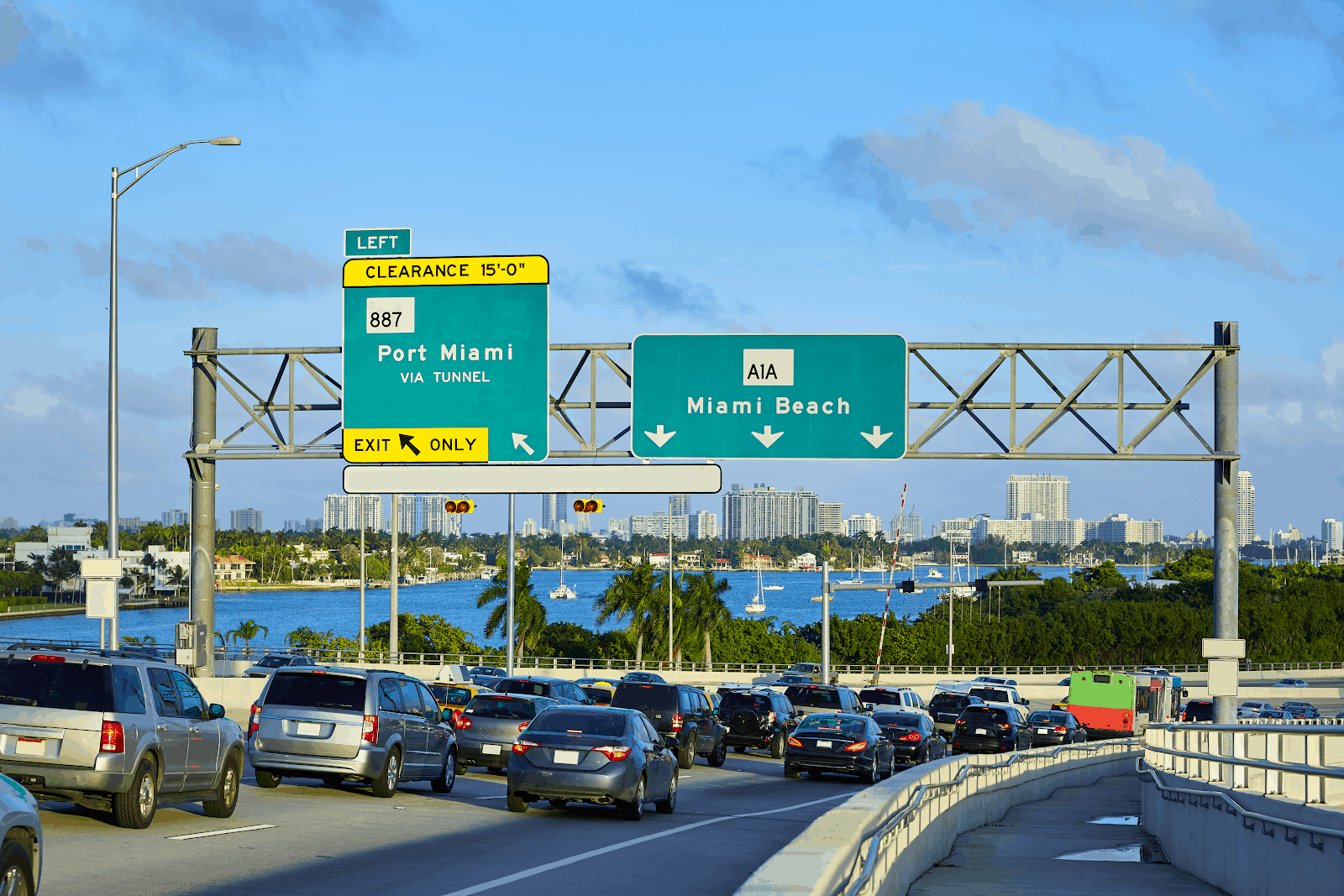Air Purifiers & Covid-19
As people seek any means to protect themselves and their families from the spread of Covid-19, many are asking, “Do air purifiers kill viruses” like...
Floor, wall and ceiling mounted to meet your unique project design.

Poor air quality has been proven to increase the risk of respiratory illnesses and even cancer. According to the World Health Organization (WHO), around 4.2 million deaths worldwide are linked to poor air quality and pollution.
In order to help improve air quality, it’s important to note the pollution and ozone levels in your city and take all possible measures to maintain healthy air quality, both inside and outdoors. If you live in the southernmost continental state, here’s what you need to know about Florida air quality.
Overall, air quality in Florida is a mixed bag. According to the Florida Department of Environmental Protection, there has been a steady decrease in levels of pollutants in the air for the past two decades. And currently, air pollution statewide is at an all-time low.
However, this doesn’t paint the full picture.
While pollutants are decreasing overall, Florida is a large state with many metropolitan centers. In general, large cities are much more polluted than low-population areas. So, just because the state’s overall air quality is getting better, doesn’t mean every city is improving.
Many major metropolitan areas in Florida have experienced a decline in air quality over the past year:
Although air quality is improving in Florida overall, it depends where you live. Many populated cities (such as Orlando) are struggling to boost their air quality levels year after year.
To determine the quality of the air in cities, researchers use air quality monitors to detect dangerous substances that are present in the air. These substances can be broken down into two categories:
Both of these pollutants can cause lasting health effects, even in small doses.
The main source of both types of pollutants is exhaust from vehicles and factory emissions. Given that major cities such as Miami, Tampa, St. Petersburg, and Orlando are home to Florida's manufacturing industry, these regions may be at particular risk for air quality issues.
Poor air quality is known to cause serious respiratory issues such as asthma and lung disease for both older adults and children, particularly in those who are unusually sensitive to respiratory-related issues. This includes:
For sensitive groups like children and the elderly or immunocompromised, air quality can also cause developmental harm and even premature death. That’s why it’s essential to reduce pollutants like vehicle and factory exhaust to boost air quality in Florida. It’s rapidly becoming a matter of public health.
Just because you go inside doesn’t mean you escape harmful outdoor air pollutants.
In many cases, indoor air quality is even worse. According to the Environmental Protection Agency (EPA), indoor environments may contain concentrations of pollutants 2 to 5 times higher than those found outdoors.
Your building’s HVAC system is your first line of defense against air quality issues, especially in a hot state like Florida where people rely on air conditioning all year round.
Traditional HVAC systems pull in air from outdoor intakes and circulate it throughout each room. This helps ventilate the building and removes pollutants that may be lingering in the air, particularly for buildings with indoor sources of contamination.
However, this poses a problem for balancing ventilation and energy efficiency. Why?
Over time, pollutant levels can increase well beyond outdoor levels, leading to poor indoor air quality even in cleaner cities. This is called sick building syndrome, and it affects many buildings throughout the world.
The best way to boost indoor air quality is to increase ventilation. Unfortunately, traditional HVAC systems are designed for efficiency, not ventilation. If you want better indoor air quality, you need an underfloor air distribution system (UFAD).
UFAD systems are designed with air quality in mind. Instead of one large duct in the ceiling emitting fresh air and one more in the ceiling removing stale air, UFAD systems introduce air at the floor level and remove it at the ceiling. Overhead supply systems push clean air into dirty contaminated air at the ceiling. UFAD systems deliver clean air directly to the breathing zone at multiple places in the floor plan.
Not only does this work with the laws of physics (hot air rises), but it also means new and old air never meets. This separation of input and output means pollutants are removed from the space instead of continuously recirculated with the fresh air, leading to significantly improved indoor air quality.
This is just one advantage of UFAD systems over traditional HVAC, but it’s by no means the only benefit. Here are some more:
UFAD represents a new type of HVAC system that’s more effective, more efficient, and easier to manage than the outdated systems you might be used to.
If you’re looking to increase air quality and support better environmental management for your building, contact AirFixture to install a UFAD system. AirFixture has worked with countless companies and builders worldwide, installing world-class heating and cooling systems that are both energy efficient and safe, creating a more enjoyable environment for building occupants.
Contact us today to learn how UFAD can benefit your next project.

As people seek any means to protect themselves and their families from the spread of Covid-19, many are asking, “Do air purifiers kill viruses” like...
Indoor Air Quality Directly Impacted by Floor Air Distribution

With so many outdoor air concerns related to the heat, humidity, and ozone, it’s easy to forget that indoor air quality (IAQ) is just as important --...